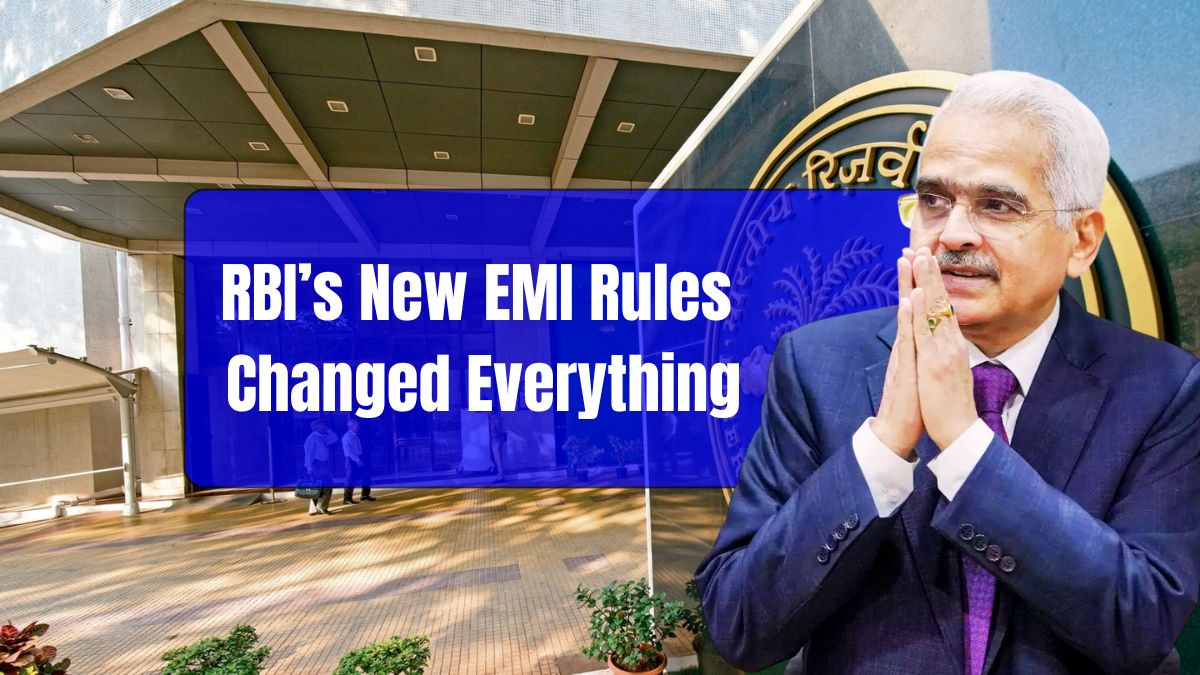RBI’s New EMI Rules – The Reserve Bank of India (RBI) has introduced new guidelines effective from April 1, bringing major relief to borrowers who repay loans through Equated Monthly Instalments (EMIs). If you have taken a home loan, car loan, or personal loan, these changes will directly impact your repayment terms.
For years, borrowers have faced unexpected EMI hikes, tenure extensions, and hidden charges due to a lack of transparency from banks and financial institutions. The new RBI rules aim to put an end to these practices by ensuring better communication and giving borrowers more control over their loans.
What Has Changed?
One of the biggest complaints from borrowers has been the sudden changes in EMIs or loan tenures, especially in floating-rate loans, where banks could alter repayment terms without seeking explicit consent. The RBI has now mandated that lenders must obtain approval from borrowers before making any such changes.
Here are the key updates:
Lenders Cannot Change EMI or Loan Tenure Without Permission
Previously, if interest rates increased, banks could either extend the loan tenure or increase the EMI without consulting the borrower. Now, they must seek explicit approval before making any adjustments.
Mandatory Key Fact Statement (KFS) for All New Loans
A Key Fact Statement (KFS) will now be provided to borrowers before loan disbursal. This document will include all important loan details in a simple, easy-to-understand format.
Clearer Breakdown of EMI Components
Borrowers will now receive a detailed breakdown of their EMI, showing exactly how much is going toward the principal and how much is paid as interest.
Standardized Prepayment and Foreclosure Charges
Many borrowers have struggled with hidden prepayment and foreclosure charges. The RBI has now standardized these costs, ensuring they are disclosed upfront in the KFS.
Improved Transparency for Floating Interest Rate Loans
Banks must now promptly notify borrowers whenever there is a change in the interest rate and clearly explain how it affects the loan tenure and EMI amount.
Better Digital Communication
Lenders are required to send timely updates to borrowers via digital channels such as SMS, email, and mobile apps regarding EMI payments, interest rate changes, loan balances, and prepayment options.
How These Changes Benefit Borrowers
These new regulations significantly improve transparency and give borrowers better control over their financial commitments. Here’s how they will help:
No More Surprise EMI Hikes – Borrowers will now have a say in whether they want to increase their EMI or extend their tenure if interest rates change.
Better Loan Planning – With a detailed breakdown of loan terms and EMI components, borrowers can make more informed financial decisions.
Easier Prepayment and Foreclosure – Prepaying a loan or foreclosing it early will now be a smoother process with clearly defined rules and fewer hidden charges.
More Clarity on Floating Interest Rate Loans – Borrowers will receive real-time updates about interest rate changes, allowing them to decide whether to pay off a portion of the loan or adjust their EMI accordingly.
Increased Awareness and Borrower Empowerment – By making the Key Fact Statement mandatory, the RBI ensures that borrowers fully understand their loan terms before signing any agreement.
Comparing the Old and New Rules
| Feature | Old Rules | New RBI Regulation (Effective April 1) |
|---|---|---|
| EMI Increase | Could be changed without consent | Requires borrower’s approval |
| Tenure Extension | Automatically extended | Needs explicit approval |
| Key Fact Statement (KFS) | Not mandatory | Must be provided before loan disbursal |
| Loan Transparency | Often unclear | Full disclosure of terms and charges |
| EMI Breakdown | Not always available | Must be provided to all borrowers |
| Floating Interest Rate Adjustments | Could be unclear or delayed | Timely communication required |
| Prepayment Charges | Often hidden or variable | Standardized and disclosed upfront |
How to Stay on Top of These Changes
To make the most of these borrower-friendly reforms, here are some practical steps you should take:
Request a Key Fact Statement (KFS) – If you are taking a new loan, ensure that you receive this document before signing the agreement. It will help you understand all loan costs and repayment terms.
Monitor EMI and Tenure Adjustments – Keep an eye on any changes in your repayment schedule, especially if you have a floating-rate loan. Ensure that your bank is not making any adjustments without your approval.
Track Interest Rate Fluctuations – Since floating-rate loans are directly affected by changes in interest rates, regularly checking updates from your lender will help you make informed decisions.
Understand Prepayment and Foreclosure Terms – If you plan to close your loan early, review the prepayment charges and ensure they align with the RBI’s new guidelines.
Use Digital Tools for Loan Management – Most banks now provide mobile apps or online portals where you can track your loan details, interest payments, and outstanding balance. Make use of these tools to stay informed.
Communicate with Your Lender – If you have any doubts about EMI changes, prepayment options, or interest rates, reach out to your lender for clarification.
Final Thoughts
RBI’s new regulations mark a major shift in the way loans are managed in India, ensuring greater transparency and giving borrowers more power over their repayment terms. These changes make it easier to track EMIs, avoid hidden charges, and plan finances more effectively.
If you are currently repaying a loan or planning to take one soon, staying informed about these new rules will help you manage your debt more efficiently. Take control of your finances by understanding your loan terms, tracking interest rate changes, and using the latest digital tools to monitor your EMI payments. The more proactive you are, the better financial decisions you can make.










